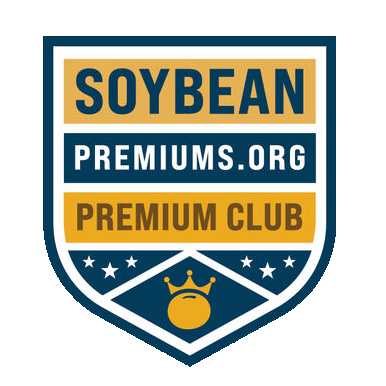Copyright © 2019 SoybeanPremiums.org All Rights Reserved
Farmer Resources
Programs
Find a Premium Program nearest you today. Start by choosing your desired state to filter the Premium Soybean Programs.
This program information is provided by the companies listed here. ISA does not independently verify or vouch for the accuracy of this information. Questions about a program should be directed to the company rather than ISA.
This program information is provided by the companies listed here. ISA does not independently verify or vouch for the accuracy of this information. Questions about a program should be directed to the company rather than ISA.
Making the Switch to Non-GMO Soybeans
If you’re looking to diversify your income stream and want to capture premium prices, growing non-GMO soybeans may be a good strategy for your farm.
While growing non-GMO soybeans requires different recordkeeping, crop inputs and identity preservation after harvest than GMO beans, farmers can tap into the expanding market. Check out some of the resources highlighted here to learn more about making the switch.
Shift in Agronomic Management. While you may spend less on non-GMO soybean seed versus traited seed, weed control may take up some of that savings and more time.
That’s because non-GMO soybeans will not tolerate the herbicides that are commonly used in GMO soybeans. This article from South Dakota State University Extension weeds field specialist Gared Shaffer discusses how weed management strategies themselves are not that different from GMO production even if the products used are not the same.
“First, we always need a weed-free start at planting. This means do not plant unless the weeds prior to planting are controlled. To give you some time for a post application and to give your soybeans a head start, make sure to apply a preemergence herbicide before planting. Then apply, if needed, a postemergence application when weeds are less than four to six inches tall, which may be anytime between two to six weeks after soybean emergence. Refer to herbicide label before application for proper methods and any restrictions,” Shaffer notes in the article.
Other Production Considerations. This article from AgWeb addresses four questions soybean farmers should ask before they make the switch to non-GMO. Here are the highlights:
- Are there naturally bred traits to look for? Answer – meet the needs of the customer.
- Should you seek out defensive traits? Answer – standability and emergence are key.
- What’s your insect pressure? Answer – trait seed has a clear advantage when it comes to managing pests. Non-GMO beans require more scouting and spraying existing insects.
- Do you need a premium? Answer – yes because you will have more challenges.
Non-GMO Handling Recommendations. According to a post on ILSoyAdvisor, farmers who want to take advantage of premium programs need to focus on the following:
- Know your variety and know that your buyer knows your variety.
- Install gentle handling equipment, such as bean ladders in bins, to minimize damage.
- Scout fields before harvest. Set up the combine to handle the size of the soybeans.
- Clean all of your equipment. Even dust from GMO soybeans is a problem, and you need to make sure corn is out of all equipment to preserve non-GMO identity.
- If you grow GMO soybeans, plant and harvest non-GMO first to avoid contamination.
- Manage moisture in the bin. Check beans every couple of weeks to prevent damage.
Non-GMO soybean contracts are posted on SoybeanPremiums.org. Browse the company listing and see if there is a match for your operation. Make the switch.
By accepting you will be accessing a service provided by a third-party external to https://soybeanpremiums.org/
